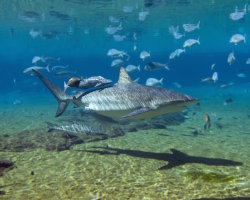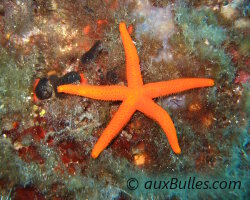Sealife guideThe blue tang surgeonfishAcanthurus coeruleus
Last updated on 09/17/2024 at 11:51 PM

The blue tang surgeonfish (Acanthurus coeruleus)
Taxonomy
- Common name: Blue tang surgeonfish, Blue tang, blue doctorfish
- French name: Poisson chirurgien bleu, poisson chirurgien bayolle
- Spanish name: Cirujano azul
- Scientific name: Acanthurus coeruleus (Bloch & Schneider, 1801)
- Family name: Acanthuridae
- Order name: Acanthuriformes
- Class name: Actinopterygii
Description
The blue tang surgeonfish is distinguished by its oval and flattened body covered with small, smooth scales. It features a bright blue color that intensifies with age and may have yellowish hues when it is young.
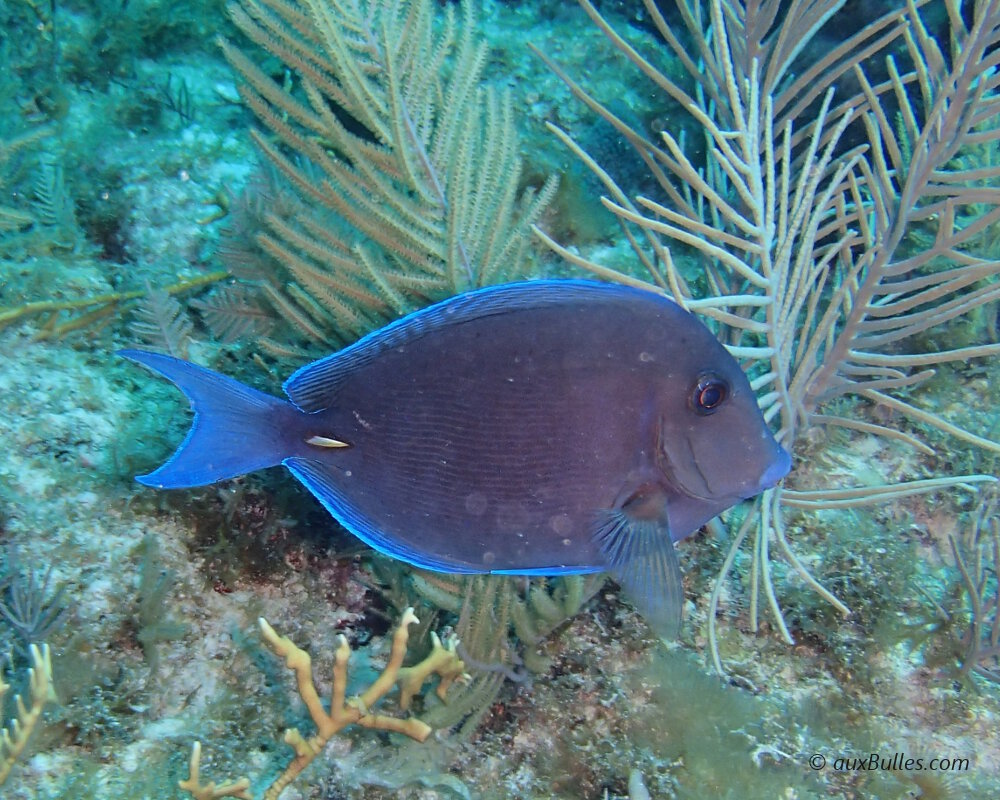
Note the presence of a sharp, lateral spine at the base of the blue tang's tail !
On each side of its tail, the blue tang surgeonfish has a sharp spine, resembling a scalpel, which helps it defend against predators.
The blue tang surgeonfish typically measures about 10 to 12 inches in length with a maximum size of up to 16 inches.
Geographic range
The blue tang surgeonfish is primarily found in the tropical waters of the western Atlantic ocean. Its range extends from the coasts of
Florida and the Bahamas to the Caribbean, including the Greater Antilles and the Lesser Antilles, as well as along the coasts of the Sargasso sea.
Habitat
The blue tang surgeonfish typically inhabits coral reefs, seagrass beds and rocky areas where it hides in crevices. It is commonly found in shallow waters up to about 65 feet deep.
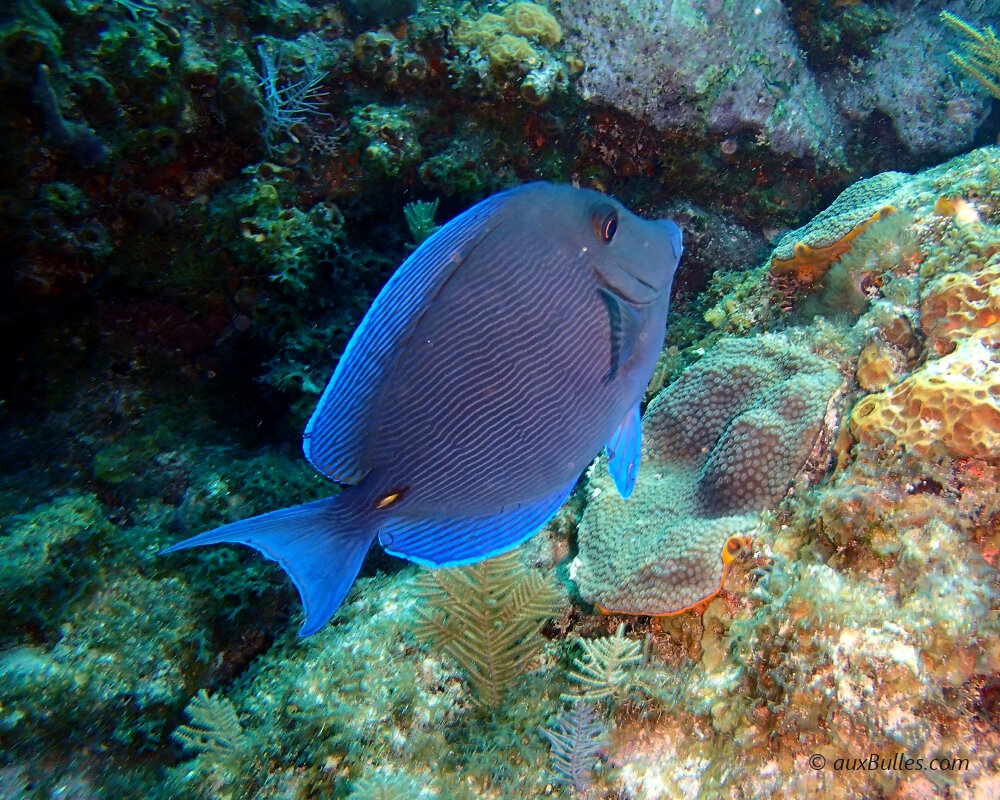
The blue tang surgeonfish (Acanthurus coeruleus)
Diet
The blue tang surgeonfish is an omnivore with a strong herbivorous tendency. It primarily feeds on algae but also consumes small marine organisms.
Did you know ?
The blue tang surgeonfish gets its name from the presence of a sharp, scalpel-like spine on either side of its tail which it uses to keep predators at bay !

The blue tang surgeonfish (Acanthurus coeruleus)
The blue tang surgeonfish is listed as many other marine species within The
IUCN Red List of threatened species. The blue tang surgeonfish appears in the
IUCN Red List since 2012 within the category Least Concern !
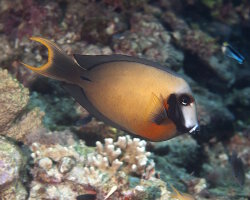
Black-spot surgeonfish
(Acanthurus bariene)
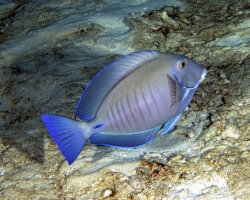
Doctorfish
(Acanthurus chirurgus)
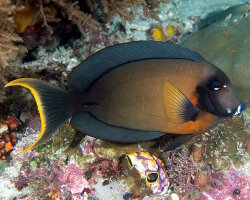
Mimic surgeonfish
(Acanthurus pyroferus)
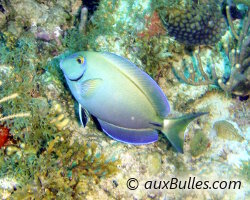
Ocean tang
(Acanthurus bahianus)
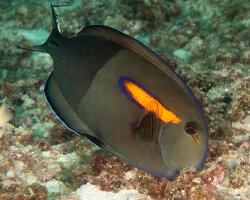
Orangeband surgeonfish
(Acanthurus olivaceus)

Palelipped surgeonfish
(Acanthurus leucocheilus)
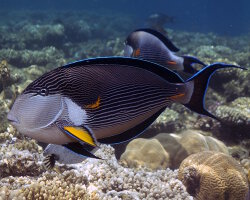
Sohal surgeonfish
(Acanthurus sohal)
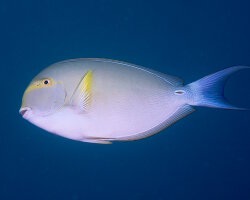
Yellowfin surgeonfish
(Acanthurus xanthopterus)
Within the same family
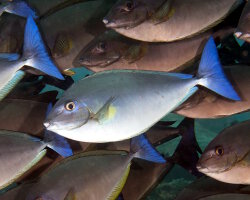
Bluetail unicornfish
(Naso caeruleacauda)
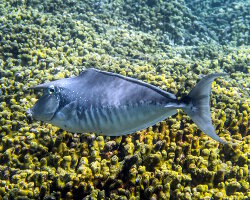
Humpback unicornfish
(Naso brachycentron)
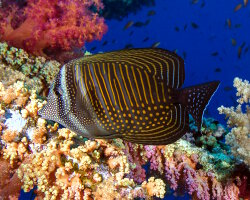
Indian sailfin surgeonfish
(Zebrasoma desjardinii)
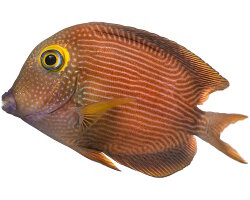
Kole tang
(Ctenochaetus strigosus)
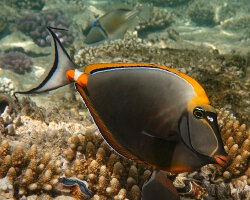
Orangespine unicornfish
(Naso lituratus)
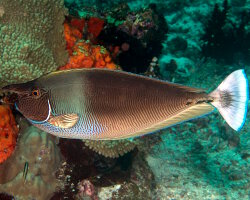
Paletail unicornfish
(Naso brevirostris)
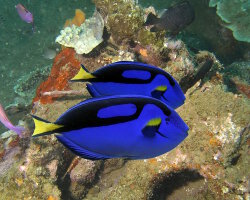
Palette surgeonfish
(Paracanthurus hepatus)
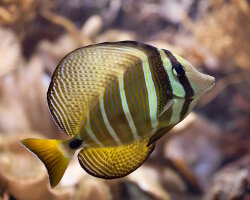
Sailfin tang
(Zebrasoma velifer)
Discover also
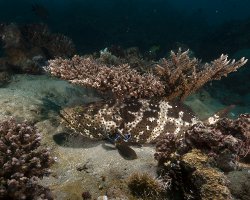
Brown-marbled grouper
(Epinephelus fuscoguttatus)
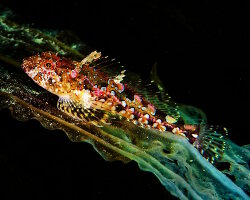
Elegant sculpin
(Bero elegans)
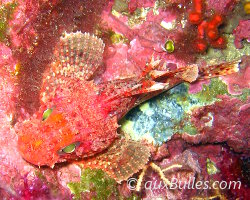
Small red scorpionfish
(Scorpaena notata)
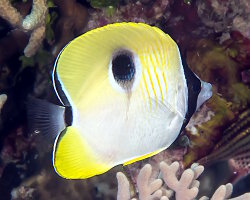
Teardrop butterflyfish
(Chaetodon unimaculatus)
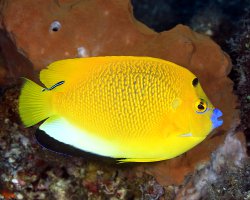
Three spot angelfish
(Apolemichthys trimaculatus)
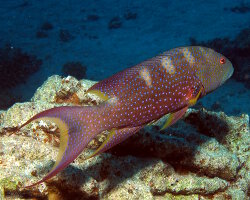
Yellow-edged lyretail
(Variola louti)
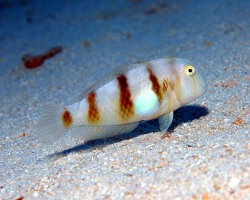
Yellowblotch razorfish
(Iniistius aneitensis)
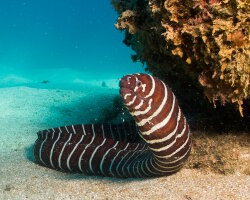
Zebra moray
(Gymnomuraena zebra)
The marine species from Caribbean sea

Chocolate chip sea cucumber
(Isostichopus badionotus)

Graysby
(Cephalopholis cruentata)
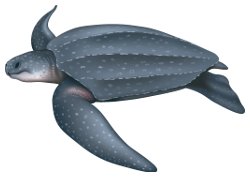
Leatherback sea turtle
(Dermochelys coriacea)
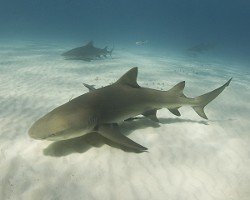
Lemon shark
(Negaprion brevirostris)
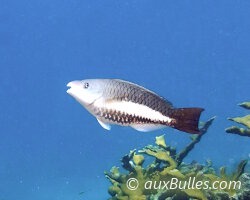
Queen parrotfish
(Scarus vetula)
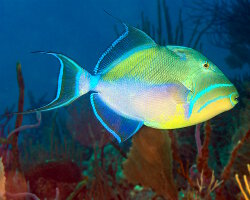
Queen triggerfish
(Balistes vetula)
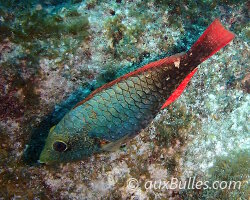
Redband parrotfish
(Sparisoma aurofrenatum)
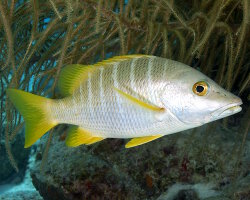
Schoolmaster snapper
(Lutjanus apodus)
Dive centers

'Les Ilets' dive center

Noa dive center








































